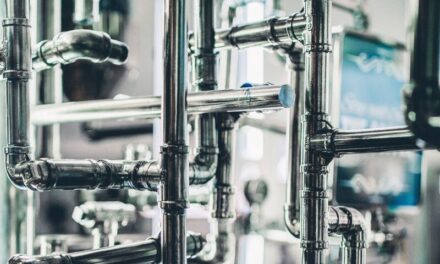 Compressed air is ubiquitous across industry and in some instances it can account for up to 30% of a sites electricity usage. With energy costs accounting for up to 86% of operating costs today, compressed air can help increase efficiency through improved energy efficiency measures.
Compressed air is ubiquitous across industry and in some instances it can account for up to 30% of a sites electricity usage. With energy costs accounting for up to 86% of operating costs today, compressed air can help increase efficiency through improved energy efficiency measures.
Annually, UK industry uses over 10TWh of electricity to compress air – equivalent to the output of almost 1.5 power stations and over 5 million tonnes of CO2 emitted to the atmosphere, and this has driven legislation to control its use.
The ISO 11011 standard put in place guidelines for companies to conduct industry-wide, like-for-like energy efficiency audits which can help establish the volume of compressed air that a company uses and how much it costs to generate.
Another measure is the mandatory CRC (Carbon Reduction Commitment) Energy Efficiency Scheme, which aims to improve energy efficiency and cutting emissions in large public and private sector organisations, offering tax benefits and financial rebates for those showing a commitment to carbon reduction. The ECA (Enhanced Capital Allowance) Scheme also provides enhanced tax relief for investments in equipment that meets published energy-saving criteria.
The first step to cutting carbon emissions and improving the energy efficiency of a compressed air system is to conduct an energy survey which should demonstrate energy saving opportunities.
Leak detection
All compressed air systems will have leaks – even new ones. A well-maintained system may leak by as much as 10%, however the leak rate of an unmanaged compressed air system can be as much as 50% of the generated output. One 3mm hole could cost over £1,000 per year in wasted energy.
An audit should detect these leaks. The next step is to fix them and to ensure that a planned maintenance and management scheme is put in place to ensure that leaks are monitored and fixed going forward.
Leak detection can be achieved via ultrasound detection. When compressed air escapes, friction develops between the gas molecules and the pipe wall. This friction produces a high-frequency ultrasound inaudible to the human ear. A compressed air leak detector can register the ultrasound, transform it into an audible sound and indicate it optically. Compressed air losses at microcracks, worn-out flange joints, defective sealing rings or loosened connections can then be addressed.
Some compressed air service providers now offer continued leak management and monitoring as part of their equipment service contracts – which is something to consider when evaluating one provider’s offering against another.
A recent trend in maintenance management is to offer compressors with built-in leakage monitoring devices. These devices automatically calculate losses through system leaks and give an estimate of their actual cost in a visual display. Monitoring losses on an ongoing basis in this way makes it very easy for the compressed air user to manage the system, and if costs start to escalate the data provided will prompt the user to conduct a thorough survey to determine the source of the leaks.
Heat recovery
Reducing energy use also means looking at heat recovery. Nearly all of the energy that is used to power an air compressor gets converted to heat. With 94% of this heat available for heat recovery it should be possible to harness this heat source. Recovery of waste heat generated by an air compressor is effectively free after the initial investment.
According to figures from The Carbon Trust, over 90% of the electrical energy used by a typical air compressor is lost as heat. Being able to capture and reuse this energy for space heating, water heating or for other production duties potentially offers real benefits for businesses and is in step with the view being taken across industry that a broader, more holistic view must be taken when it comes to energy efficiency.
Typical sites and applications include, water heating, space heating, process heating and drying, boiler houses for feed water or combustion air, and compressed air plant using heat to regenerate desiccant dryers.
Multi-processor control
According to BOGE, two or more compressors operated via a central controller can provide much greater energy savings. Firstly, it can maintain the pressure to a much narrower range. This is achieved by constantly monitoring the pressure using an accurate pressure transducer to predict when a compressor should be switched on or off. This is based on the rate of change of the system pressure. Using this method, the pressure band can be maintained to within 0.2 bar.
The second technique is to predict and select the best combination of compressors to meet demand. This method is said to be particularly effective if using a combination of fixed speed and variable speed machines because it minimises off-load and part-load running of the compressors.
Multi pressure systems can make significant savings; every 1 bar saved on pressure can save 7% on electrical running costs, while booster compressors can be integrated where limited flow of higher pressure is needed.
Electronic sequential controllers, which control multiple compressors around a single set pressure, can also make compressors available to more closely match demand. For example, instead of using a 100kW compressor at 60% utilisation, the system will select two 30kW compressors at 100% utilisation. These systems can operate up to 16 separate air compressors in a pressure window of only 0.2 bar and can also be set to vary the pressure according to production requirements, for example, lowering pressure at weekends or for varying shifts.
BOGE is committed to all aspects of compressed air waste reduction and energy efficiency and can support end users by providing comprehensive and regular energy audits in line with ISO 11011. It’s audits evaluate all areas in the compressed air generation and treatment process to detect any present defects and can recommend a number of tests – including a consumption test, vibration control test, leakage test, sound test and an oil check – to ensure the compressed air system offers the best possible efficiency.






